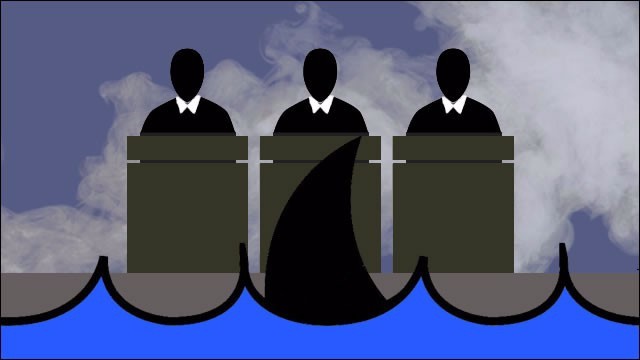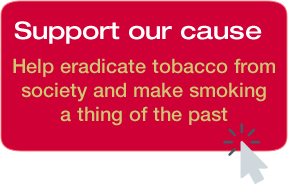Tobacco manufacturers surprisingly candid during hearing: profit takes precedence over health
14 November 2019

OPINION
During the hearing of the lawsuit filed by the Youth Smoking Prevention Foundation (SRPJ), the City of Amsterdam and 14 other parties against the Ministry of Health, Welfare and Sport (WVS) for its decision to take no action in response to the flagrant violation of emission levels with the so-called ‘rigged cigarette’, the tobacco sector made a surprising admission. Basically, the sector has no objection to a more accurate method of measuring levels of poisonous substances in cigarettes, as long as the maximum levels allowed by law are raised.
By Phon van den Biesen
Here’s a quick recap. Article 3 of the Tobacco Products Directive from the EU specifies the maximum levels of poisonous substances that a cigarette may contain: 10 mg of tar, 1 mg of nicotine and 10 mg of carbon monoxide. These are known as the TNCO levels: 10-1-10. And Article 4 specifies that emission levels from cigarettes must be measured on the basis of an ISO standard measurement method.
However, cigarette filters contain tiny holes that draw in air as the ISO smoking machine measures emission levels. So the ISO machine is in fact measuring highly diluted tobacco smoke and therefore recording lower emission levels than those actually inhaled by smokers. That’s because smokers block these holes with their lips and fingers. Smokers inhale undiluted smoke.
The ISO method was developed in the laboratories of the tobacco industry. Hence the name: ‘rigged’ cigarette.
Canadian Intense
The National Institute for Public Health and the Environment (RIVM) has carried out control measurements using a method that involves blocking those holes. The method is called Canadian Intense. And the findings? Smokers inhale two to three times more poison than the ISO method indicates. As a result, measured over a longer period of one year, smoking kills thousands more people than it would if an accurate measurement method was used.
Lawsuit
Last Monday, 11 November 2019, the Youth Smoking Prevention Foundation, along with the City of Amsterdam and 14 healthcare organizations, argued in the Rotterdam District Court that the government should henceforth enforce the observation of the maximum emission levels by using a reliable measurement method, thereby compelling tobacco manufacturers to modify cigarettes so that they comply with the maximum allowable levels of poison. After all, those maximum levels do at least offer some protection. The Court will take a decision on the matter in six weeks.
Statement
Also present as an interested party during the court proceedings in Rotterdam was the Dutch association of cigarette and cut tobacco producers (VSK). Its director, Jan Hein Sträter, hardly spoke throughout the two-hour hearing. He therefore did not dispute the accuracy of the claim made by the complainants. (How could he, given that the RIVM has already proven the existence of the so-called ‘rigged’ cigarette?!) But what he did say was: “It doesn’t matter to us at all what measurement method is used, as long as it works well.”
Comparison
The background to this issue is that tobacco manufacturers view the measurement method as a way to compare the TNCO emission levels of various cigarette brands with one another. The aim is not to protect public health, despite the fact the law clearly states that maximum emission levels have been set to protect public health. The VSK also expressed no objection to the use of the Canadian Intense method... “as long as the maximum emission levels [the 10-1-10] are modified”.
Naturally, Sträter did not mean that the maximum emission levels should be lowered. But he doesn’t want them to remain the same either.
Advantages
The tobacco manufacturers are thus stating that they do not want to lose the ‘advantages’ of the ‘rigged’ cigarette and therefore want to continue with at least a doubling of the maximum levels of tar, nicotine and carbon dioxide for smokers. In other words, more accurate measurement methods are fine, as long as they come with higher maximum levels. Never before have the tobacco manufacturers been so candid in confirming that the ‘rigged’ cigarette is an integral part of their revenue model.
Rigged cigarettes, containing far higher levels of poisonous substances than legally allowed, are responsible every year for 20,000 deaths as a result of a multitude of chronic diseases. What the tobacco manufacturers are in fact saying is: improving the measurement method is fine by us, but we remain committed to our quota of 20,000 deaths per year!
Lawyer Phon van den Biesen is representing the Youth Smoking Prevention Foundations (SRPJ) in this case.





 Rookpreventie Jeugd is registered as a Public Benefit Organisation.
Rookpreventie Jeugd is registered as a Public Benefit Organisation.